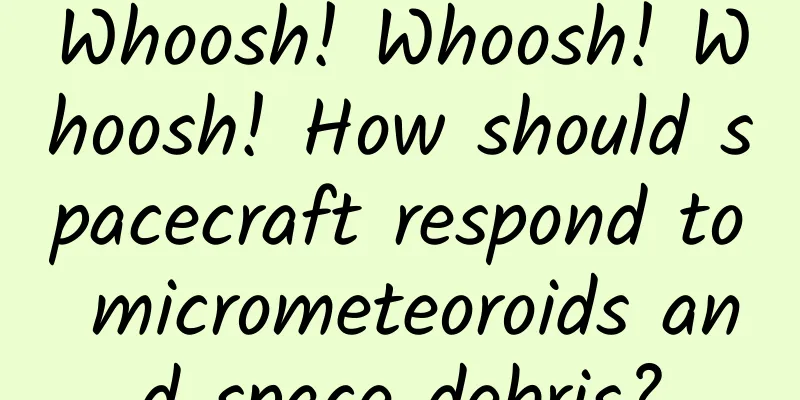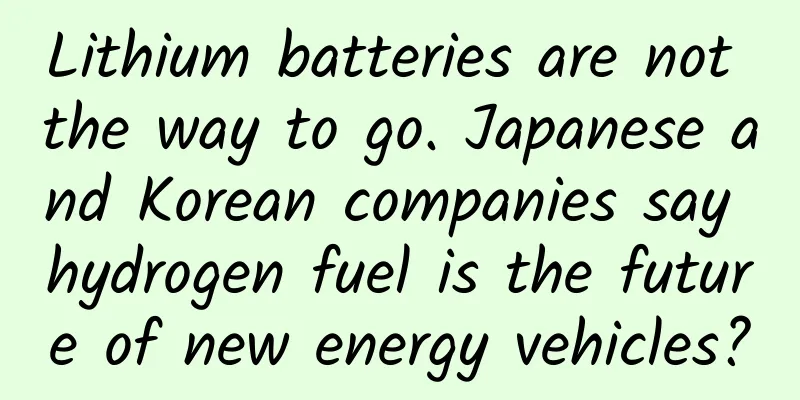Whoosh! Whoosh! Whoosh! How should spacecraft respond to micrometeoroids and space debris?

|
In December 2022, just as Russian astronauts Sergei Prokopyev and Dmitry Petrin were preparing to start their scheduled extravehicular activities, the propulsion module of the Soyuz MS-22 "Konstantin Tsiolkovsky" docked on the Russian segment of the International Space Station was found to have a liquid leak, and the liquid sprayed out from the leak point at a fairly fast speed and lasted for several hours... Soyuz MS-22 is leaking coolant Russian astronauts are using the European robotic arm docked on the Science module to inspect the Soyuz MS-22. A glitch that can't be repaired in space After the leak was over, astronaut Anna Kikina operated the European robotic arm connected to the Science module to conduct an exploration, and the Canadarm2 on other modules also joined the inspection. Later, according to the judgment of ground personnel and astronauts, it was determined that the cooling pipe inside the Soyuz propulsion module had a coolant leak for some reason. The cooling system is responsible for not only keeping the interior of the descent module at a comfortable temperature for the crew, but also for cooling the flight computers and other equipment buried deep inside. Unfortunately, this is not a fault that can be repaired in space. On March 27, 2023, the Soyuz MS-22 spacecraft returned to Earth with 218 kg of scientific experiment results and space station equipment for analysis or reuse. Later, according to media reports, the Soyuz MS-22 spacecraft had a thermal regulation system leak due to being hit by a micrometeoroid. It is not the first time that a micrometeoroid has collided with a spacecraft. On September 9, 2006, the Atlantis space shuttle took off to carry out the STS-115 mission. This mission was mainly to deliver two new trusses P3 and P4 to the International Space Station. It was scheduled to return to Earth on September 21. During the inspection, maintenance personnel found a hole with a diameter of about 2.7 mm and a depth of about 12 mm on the radiator on the inside of the right payload bay door of the space shuttle. The hole is close to the Freon circulation coolant loop. There are two such cooling loops on the space shuttle. If one of the two loops is punctured, causing a leak of Freon and forcing it to shut down, it may mean that the space shuttle is forced to return early. Space Shuttle STS-115 The radiator on the inside of the payload bay door was hit The space shuttle was hit by micrometeoroids earlier. During the STS-73 mission in 1995, a micrometeoroid penetrated the outer thermal insulation on the payload bay door of the space shuttle Columbia. According to statistics, the space shuttle has suffered at least 20 impacts, including aluminum fragments caused by space launches and micrometeoroids. Not only the space shuttle, as of the end of 2022, the approximately 12,603 square meters of the surface of the International Space Station have been hit thousands of times, leaving traces everywhere. In recent years, with the increasing number of rocket launches and the rapid growth of the number of satellites, people are paying more and more attention to space debris. In 2022, there was also an incident in which a satellite was suspected to have disintegrated due to space debris. So, what are micrometeoroids and space debris? What impact will they have on spacecraft? What methods can we use to deal with them? What are micrometeoroids and space debris? Meteoroids are meteorite fragments floating in the solar system. They vary in size, from dust or gravel to large trucks. Meteors are bright lights that ionize the air surrounding them when they fall into the Earth's atmosphere, while meteorites are meteoroids that fall to the ground. Humans are no strangers to meteors. Our Earth welcomes material from the universe every day. According to statistics, about 10 million kilograms of meteoroids fall on the Earth every year, some of which will hit the ground to form craters and are relatively well preserved. Micrometeoroids refer to fragments of meteoroids that are less than 1 cm in size. These fragments may have been floating around the sun for hundreds of millions of years. Micrometeoroids in the solar system are mainly caused by collisions between asteroids of different sizes in the early formation of the solar system. In the chaos of the early formation of the solar system, asteroids constantly collided and condensed, gradually forming solid planets such as the Earth and Mars, and the debris caused by those collisions is the main source of micrometeoroids. Many of them did not disappear after the solar system gradually stabilized, but moved irregularly within the gravitational range of the sun. In addition to asteroid collisions, another threat is comets. When the parent comet that produces meteoroids returns to the Earth, the number of meteoroids near the Earth and Earth-orbiting spacecraft will increase dramatically, posing a great threat to spacecraft. Space debris is generated by human space activities. Although the history of human spaceflight is less than a hundred years old, the development of space debris is extremely rapid due to the expansion of human space activities year by year. Because these debris come from man-made objects, they are mainly in the orbits where spacecraft are mainly distributed, such as low-Earth orbit below 1,000 kilometers, geosynchronous orbit and medium-Earth orbit, etc. Therefore, space debris poses a great threat to human high-value space assets, such as space stations, communication satellites, Internet constellations, navigation satellites, remote sensing satellites, etc. Space debris is caused by human activities. The main sources are abandoned spacecraft in orbit, abandoned rocket bodies, explosive bolts used for separation stages and fairings, cables and circuit boards on rockets, metal fragments generated during flight, paint fragments, rocket propulsion system fragments, aluminum oxide particles and slag generated by solid engines during flight, fragments caused by explosions of satellites or rocket stages due to some reasons during orbit, or parts accidentally separated from the payload, such as the coating on the thermal protection layer falling off. In addition to the above reasons, another source of space debris is artificial anti-satellite experiments, that is, testing the self-built anti-satellite system by launching anti-satellite missiles to destroy target satellites in orbit. Every anti-satellite experiment will result in a large amount of space debris. These space debris will not only stay in the orbit of the original satellite, but with the influence of gravity and the atmosphere, these debris will gradually spread to orbits of various heights and inclinations, and after a period of time, form a sparse space debris cloud that wraps around the entire earth, which may threaten spacecraft in various orbits at any time. What impact will the debris have on spacecraft? The impact damage caused by micrometeoroids and space debris to spacecraft can be divided into three categories according to the degree of impact on the spacecraft. In the following, micrometeoroids and space debris are collectively referred to as debris for ease of explanation. Catastrophic collision. This is the most serious debris collision accident. The specific scene is similar to the scene in the movie "Gravity" when the International Space Station was attacked by a large amount of debris produced by anti-satellite experiments. The massive amount of debris directly destroyed the space station and the docked space shuttle at the same time. This level of collision will cause the complete disability of the spacecraft and generate more debris at the same time. At present, there are not many collisions of this level. Recoverable collision. This is a more serious debris collision accident. The collision causes temporary or partial loss of function of the spacecraft. For example, the collision may cause the flight attitude of the spacecraft to become unstable, and the attitude needs to be adjusted to continue normal operation; for example, after the solar panel is attacked, some equipment needs to be turned off to maintain the normal operation of the power system. Cumulative effect collision. This is a relatively minor debris collision accident. Generally, the fragments that cause this kind of collision are not large, usually in the millimeter or micron level, and this kind of collision generally does not cause serious damage to the spacecraft. But as the saying goes, a little bit of accumulation makes a lot, and a pile of sand makes a tower. Although the damage caused by a single fragment is limited, the number of them in orbit is very large, so the probability of collision with the spacecraft is very high. This kind of long-term collision will cause considerable cumulative damage to the spacecraft, especially to the performance degradation of the spacecraft's external materials, exposed optical instruments, and solar panels. The current International Space Station is the best example of a collision that has suffered a cumulative effect. On April 7, 1984, the Challenger space shuttle placed a special object in orbit. Its name is LDEF. It is a research platform used by NASA to study the impacts of various instruments and materials in the space environment. The full name is "Long-term Exposure Facility". It stayed in orbit for 69 months. On January 20, 1990, LDEF was brought back to the ground by the Columbia space shuttle. Researchers found that due to the impact of space debris and micrometeoroids, about 34,000 small impact craters were found on the surface of about 130 square meters. The largest pit had a diameter of 6 mm, and there were more than 5,000 pits with a diameter greater than 0.3 mm, and the rest were less than 0.3 mm. The sputtering caused by multiple small impacts of debris on the temperature control coating caused 5% of the coating to separate from the surface. This is the damage caused by the cumulative effect collision. Long-term exposure facility, a research platform for studying the effects of various instruments and materials in the space environment From a specific perspective, the impact of debris can be divided into threats to manned spacecraft, threats to important components of spacecraft, impacts on the performance of spacecraft surface materials, and pollution caused to spacecraft. The threat to manned spacecraft is easy to understand. For example, when astronauts are doing a spacewalk, a large group of small debris is flying towards the space station at high speed, which often reaches more than ten kilometers per second. Once such debris hits the space suits worn by astronauts, it is likely to cause penetration, posing a serious threat to the astronauts' bodies. Therefore, before astronauts go on a spacewalk, they will assess the orbital environment, and the space station will consciously avoid some observable debris. However, there are times when it is hard to guard against, such as during the space shuttle STS-118 mission, when a fragment hit the handle used by the astronauts for spacewalks, and the pit was very sharp, which directly cut a hole in the astronauts' gloves, forcing the spacewalk to end early. Later, the staff specially made better anti-cut treatment for the gloves of the space suits. Debris hits astronaut's moving handle Scratched space suit gloves The threat to important components of spacecraft is a relatively large topic, because there are many important components of spacecraft. For example, structural damage to spacecraft, debris hitting the panel of the spacecraft will cause its partial distortion and deformation, endangering the local stability of the structural plate, destroying the integrity of the epoxy resin packaging structure near the metal inlay, causing the loosening of instruments and equipment, affecting the normal operation of the instruments. If a pressure vessel is hit, such as a spacecraft fuel tank or an attitude adjustment gas tank, it will eject material outward to generate thrust when penetrated, causing the spacecraft's attitude to lose control. A sufficiently large thrust may cause certain weak links of the spacecraft to deform or break, or even cause an explosion. For satellite and space station solar panels, collision damage may cause short circuits and reduced power supply capacity. If debris causes damage to the orientation and drive mechanisms, it may cause the panels to point away from the direction of sunlight, thereby reducing the power supply capacity of the solar panels and affecting the power consumption of satellites and space stations. If it collides with the battery pack of a satellite or space station, it will cause the battery to lose its power supply capacity. Debris hits solar panels on International Space Station If the debris collides with an antenna outside the spacecraft, the damage will cause the antenna to deform and performance to degrade. If the antenna's orientation and driving mechanism are damaged, the antenna will deviate from its direction, affecting the flight mission and even causing the spacecraft to fail. Debris will also affect the surface materials of spacecraft. For example, optical devices for the sky or the ground are very sensitive to surface damage caused by multiple small collisions. The degree of light scattering will increase dramatically, and the contaminated particles caused by collisions will also reduce the optical performance of the instrument. For the thermal insulation materials wrapped on the outside of the spacecraft, such as the polyimide materials wrapped on the surface of the satellite, multiple small collisions will cause the thermal insulation capacity of these thermal insulation films to decay and degrade, and the heat absorption coefficient will increase. In addition, these films may be severely damaged by multiple collisions with small debris, reducing the thermal insulation performance. If the surface material is directly penetrated, some instruments that cannot directly contact the outside will come into contact with the outside world, causing the instruments to fail. The thermal blanket of the Russian module Zarya of the International Space Station was hit by debris In the Soyuz MS-22 coolant leak accident, ground personnel asked astronauts on the space station to close windows to avoid contamination due to fear that the leaked coolant would contact the cabin wall and cause contamination. After the debris hits the surface material, it may cause sputtering, vaporization, ionization, plasma cloud, secondary debris cloud, etc. on the surface of the spacecraft, which will cause serious contamination to the surface of the spacecraft. Of course, in space, in addition to the existence of debris, there are also factors such as atomic oxygen and ultraviolet rays that can damage spacecraft materials. Space shuttle window hit by debris during STS-7 mission The window of the Zvezda core module of the International Space Station was hit by debris What are the ways to deal with fragments? Faced with countless debris floating in orbit, there are currently several ways to minimize the threat to spacecraft, such as tracking debris in orbit; taking measures to slow the growth of debris; protecting spacecraft; and actively capturing debris. Debris tracking has been going on for many years. According to the European Space Agency's Space Debris Office, as of December 22, 2022, there are about 36,500 pieces of space debris larger than 10 cm, 1 million pieces of space debris between 1 cm and 10 cm, and 130 million pieces of space debris between 1 mm and 1 cm. However, this does not include countless pieces of extremely small size that are difficult to be observed by ground-based radars and telescopes. Therefore, this method can only be used to predict the orbits of some threatening and larger pieces of debris in advance, and allow space stations and satellites to avoid them in advance. Illustration of space debris surrounding the Earth Slowing down the growth of debris has become an international consensus. There are many operations that can slow down the growth of debris, such as passivating the second and third stages of the rocket by releasing residual propellant. The second and third stages of the rocket are often abandoned directly into space because their speed and orbit at the time of separation can no longer return to the earth. At this time, they can be passivated by emptying the fuel in the tank so that they will not explode in space and produce fragments. As for satellites, for those satellites that have difficulty returning to the atmosphere and whose lifespans have expired, the ground can use a series of maneuvers to move them away from their existing orbits, giving up precious orbital resources and sending them to a super-geosynchronous orbit, which is the well-known "graveyard orbit." There are many ways to protect spacecraft from debris. For example, Whipple shields have been used on the International Space Station and some deep space probes. Whipple shields are essentially several metal plates stacked in a way that leaves a gap in the middle. The metal can be stainless steel or hard aluminum alloy, and the middle can be filled with fibers such as Kevlar used in bulletproof vests and helmets. Take the Whipple shield used on the European Columbus module, Node 2 and Node 3 of the International Space Station as an example. From the outside to the inside, they are: 2 mm thick 306 stainless steel, 2 mm thick 6061T-6 aluminum alloy, 110 mm thick Kevlar fiber bulletproof layer, 50 mm thick 2219 aluminum alloy, and finally a thermal insulation layer. Active capture is currently a relatively new way to deal with debris. In 2016, Japan launched the HTV-6 supply spacecraft to the International Space Station. It had a debris collector that could intercept and capture debris by releasing a rope net, but the net was not released successfully and the mission failed. Although various countries currently have plans to use various methods, such as lasers and rope nets, to clean up debris, none of them have yet been implemented. However, although the debris cleaning has not been effective, the cleaning experiment for abandoned satellites has been successfully carried out. In 1978, NASA professor Donald Kessler proposed an effect, that is, since the space debris pollution in low-Earth orbit is already very serious, the collision between debris and debris, and between debris and spacecraft may lead to a cascade reaction, and each collision will produce more debris, and more debris will further increase the possibility of collision. This concept is called the "Kessler effect". In the worst case, since the debris has completely covered the Earth's orbits, humans will not be able to use orbital resources for a long time until the debris naturally falls back into the atmosphere; but the farther the debris is from the atmosphere, the longer it will take, and it may even take tens of thousands of years. This situation is not impossible. There are more and more satellites in the Earth's orbit. In the future, tens of thousands of low-orbit satellites will operate in the Earth's low-Earth orbit, and the probability of debris collision will greatly increase, and the threat of debris to spacecraft will become greater and greater. For a cleaner orbit, all parties involved in space activities need to work together to contribute to cleaning up the space environment. |
<<: Seize the Autumnal Equinox! Don’t miss the best time to see the clouds →
>>: Interstellar "Spring Cleanup": A Guide to Cleaning Up Space Junk
Recommend
If Lexus is now produced domestically, how much stage can Chinese consumers give it to perform?
Perhaps in today's society, it has become a j...
From music reviews to branded videos, what are NetEase Cloud Music’s marketing secrets?
There is a jargon in the advertising circle: NetE...
They actually live on the seabed where there is no sunlight!
The mid-ocean ridge is 2000~3000m below the sea s...
The site consumption of the search bidding account is stable, but the conversion volume has decreased. Now that the consumption has been reduced, there is no effect in expanding keywords based on good conversions. What should I do?
The keyword report is mainly about keyword displa...
Real physics terms: Atomic bombs have nothing to do with atoms, and hydrogen bombs have little to do with hydrogen
In scientific research, scientists create proper ...
Haoze talks about the truth about ordinary people's wealth 1 document Baidu cloud download
Haoze Yitan·The truth about ordinary people's...
Talking about fission activities: How to increase tens of thousands of fans per day through one activity?
As we all know, almost every company is talking a...
Condor Capital: Q2 2023 Robotics Report
Condor Capital released its “Q2 2023 Robotics Rep...
Photo browsing artifact source code sharing
Source code introduction: Share a beautiful pictu...
Teach you how to build social marketing from 0-1 for free!
Users' purchasing behavior has also changed f...
2022 Automotive Marketing Report!
The subsidy policy that has been maintained for 1...
10 Best JavaScript Development Practices You Need to Know
Many extended features of Javascript make it more...
Lenovo Z5: A truly conscientious and high-quality smartphone that stands out among the thousand-yuan smartphones
Lenovo first launched the "conscientious qua...
Top 5 popular marketing models in 2021
There is less than a month left in 2021. The two ...
WeChat opens these 3 settings to improve fluency and security, and the elderly also need to learn
When we use WeChat, we often feel that WeChat is ...









